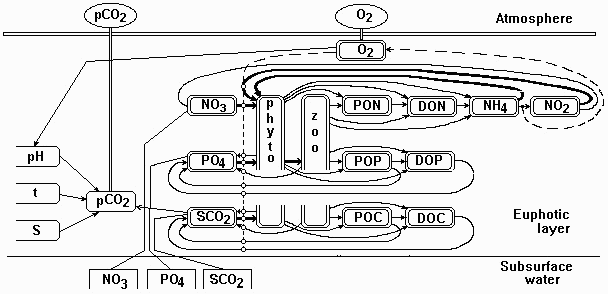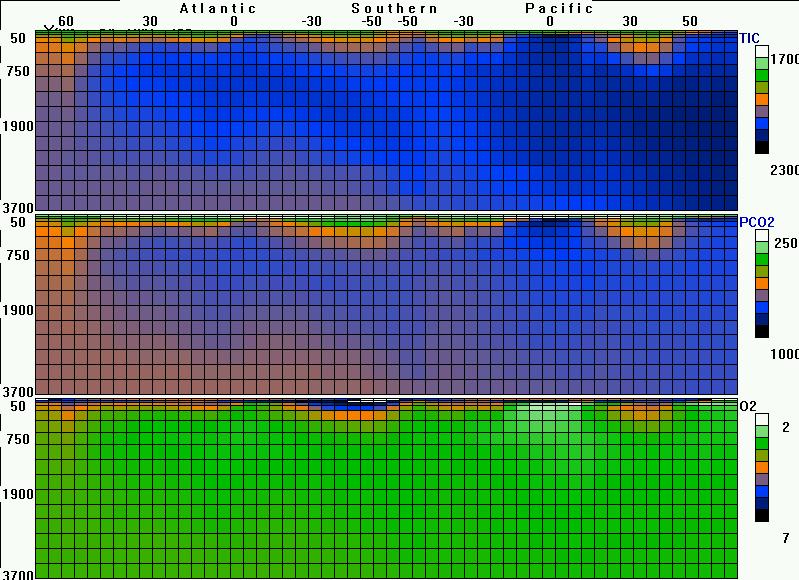
The results of model simulation carried out on the base of the Stream Function fields of the Potsdam Inst. for Climate Impact Researches (Ganopolski et al, 1995) are presented. The matter transformation was described according to (Yakushev, Mikhailovski, 1995).



Distribution and variability of oceanic nutrients are connected first of all with two groups of processes: hydrophysical processes of advection and turbulence and chemical-biological processes of organic matter formation and decay. Besides, processes of ocean-atmosphere gas exchange affect concentrations of gaseous compounds, and carbonate system processes affects the balance between different forms of inorganic carbon.
All these processes were paramaterized in the model. To parameterize chemical-biological processes we described transformation of phosphorus compounds (phosphates - PO4, particulate organic phosphorus - POP, dissolved organic phosphorus - DOP), nitrogen compounds( nitrates - NO3, nitrites - NO2, ammonia - NH4, particulate organic nitrogen -PON, dissolved organic nitrogen DON), dissolved oxygen (O2), carbon compounds (total inorganic carbon - TIC, particulate organic carbon - POC, dissolved organic carbon - DOC) and biological parameters - phyto- and zooplankton. There were also described carbonate system transformation (between carbonate ion -CO3, bicarbonate ion - HCO3, gaseous carbon dioxide - CO2) and CO2 water-air exchange processes.
The non-linear Michaelis-Menten type functions were used to describe the consummation of the inorganic nutrients' forms by phytoplankton and phytoplankton by zooplankton. The first order formula with a constant was utilized for the remaining processes, connected with metabolism and regeneration of particulate (POM) and dissolved (DOM) organic matter. Carbon and phosphorus were consumed by phytoplankton assuming constant C/P ration. Due to accepted differences in organic P, C oxidation rates the C/P ratio differed in the organisms and dead organic matter.
The carbonate system parameters were calculated on the base of carbonate system equations (Millero,1995). To describe the process of Ca CO3 production and carbonate system balancing after gaseous CO2 was consumed by phytoplankton, the it was used an original iteration scheme was used. The exchange of CO2 across the air-sea interface is computed based on the formulation of Waninkhoff.
The model was numerically integrated in finite differences using iteration method. The hydrophysical scenario and the geographical field of application were changed according to concrete goal of modeling.